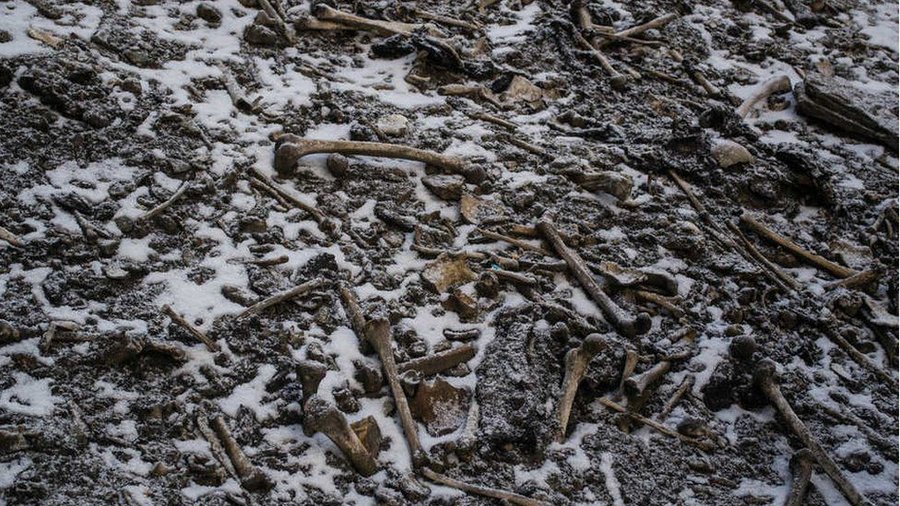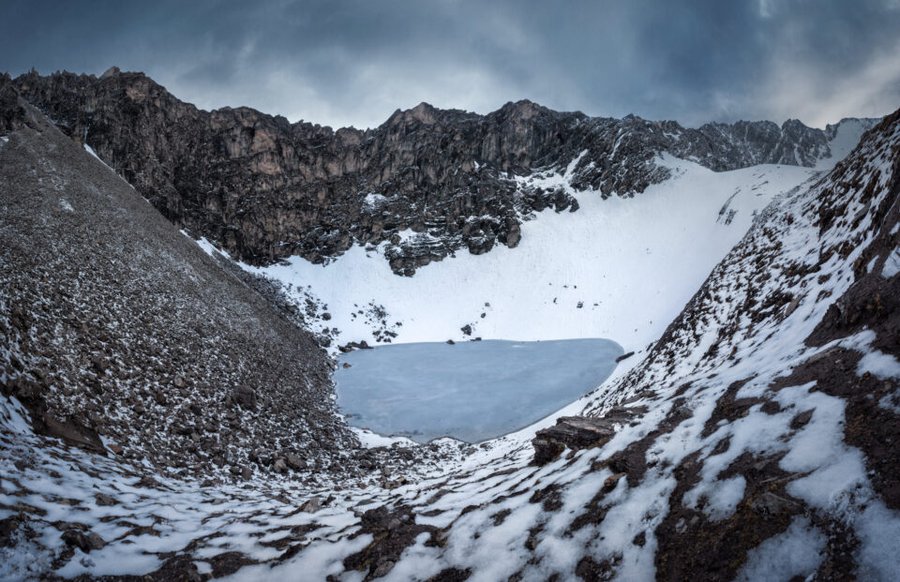Did you hear about this lake before? Well neither did I, but as I was surfing the internet, I came across this weird term of Skeleton Lake, yes, it is situated in India and it is something so mysterious that everyone are curious about it.
In 1942, an Indian forest official named H K Madhwal stumbled upon hundreds of human skeletons that were piled up around the ‘Roopkund’ lake in Uttarakhand. He reported an unusual sighting – skeleton lake is a mysterious lake where around 300 to 800 people died and the stern and the frigid Himalayas preserve their bodies to date. In the late 1950s, the mountains were announced public and since then this site has been raising the curiosity of people and triggered some detailed investigations.
When this lake was first discovered, it was during World War II and there is a simple explanation as to why so many skeletons were found here. These unfortunate people were invading Japanese soldiers; they were an Indian army returning from war. A few years ago in 2004, a group of archaeologists suggested after inspecting the bones and dating the carbon within them, that they were travellers caught in a lethal hailstorm around the ninth century.

They were believed to have been on an esteemed, once-in-a-12-year Hindu pilgrimage called Nanda Devi Raj Jat Yatra, an ancient tradition that continues to this day. Roopkund is on the way to Homkund, the final destination of this arduous foot journey.
Veena Mushrif-Tripathy, professor of archaeology at Deccan College in Pune, was part of the 2004 investigation. She recollected that the team concluded it as a pilgrim theory as it was the most plausible one, there were no weapons at the site that indicated that they didn’t die because of an attack and they were not soldiers. They also found remains of musical instruments, and there were old folk stories of pilgrims travelling on the Nanda Devi Raj Jat Yatra. The DNA analysis, Mushrif-Tripathy said, revealed it was a male-female group belonging to a wide age range, further strengthening this hypothesis for the skeleton lake.
Mushrif-Tripathy never actually reached the lake; she was stuck at base camp with altitude sickness. “That was one of my biggest … regrets,” she says. “Still today, I am not over that.”

Also check out: 11 unknown facts about banana
The skeleton lake has always been an element of curiosity for people. In a new study of Nature Communications, an international team of more than two dozen of geneticists, archaeologists, and other specialists dated and analyzed the bones of 37 people found at Roopkund. The majority of the deceased died 1,000 or even before that while a few died recently like in the 1800s. The makeup of the skeleton was more Mediterranean than South Asian.
“It may be even more of a mystery than before,” says David Reich, a geneticist at Harvard and one of the senior authors of the new paper. “It was unbelievable because the type of ancestry we find in about a third of the individuals is so unusual for this part of the world.”
Also check out: Misconceptions of Islam
As Fernando Racimo, a geneticist at the University of Copenhagen points out, ancient-DNA studies commonly focus on the global movements of human populations over thousands of years. The new study, in contrast, is “a nice example of how ancient-DNA studies could not only inform us about major migration events,” Racimo says, “but it can also tell smaller stories that would have not been possible to elucidate otherwise.” Stark says that seeing geneticists and archaeologists collaborating to ask nuanced questions is refreshing. “A lot of the time it seems like the geneticists are just performing a service,” she says, to prove the hunches of anthropologists or historical linguists about where a specimen really came from. “And that’s not what we should be asking.”
Miriam Stark, who is an archaeologist at the University of Hawaii at Manoa who was not involved in the research of the skeleton lake noticed that, unlike other archaeological sites, Roopkund is “not within a cultural context” like a religious site or even a battlefield. That makes the new study “a really useful case study of how much information you can milk” from an imperfect data set, she says.

Also check out: The power of red
The one thing that sets this lake apart is its frigid environment, along with the bones it also preserves the DNA and, in some cases, – little amounts of clothing and flesh.
To Kathleen Morrison, the chair of the anthropology department at the University of Pennsylvania, the least interesting thing about the specimens at Roopkund is where in the world their DNA says they came from. She points out that a Hellenic kingdom existed in the Indian subcontinent for about 200 years, beginning in 180 B.C. “The fact that there’s some unknown group of Mediterranean European people is not really a big revelation,” she says. She also warns that the carbon – dating gets less and less accurate the closer the specimens get to the present day, so the early 1800s specimens of Mediterranean origin might not be 100% accurate.
With time, the Himalayas being the popular tourist spot for trekkers also popularized the skeleton lake and trekkers slowly started to explore the tough yet beautiful Roopkund Trek.
In 2010, the first ancient human genome was sequenced and hence the Roopkund mystery was resurrected. 38 bone samples (powdered) stored in ASI (Anthropological Survey of India, Kolkata, were sent to 16 labs worldwide for genomic biomolecular analysis, and this 5-yearlong study left everyone flabbergasted.
The samples from skeleton lake were of three distinct genetic groups and it was deposited in the lake for over 1,000 years. The genetic roots were South Asian that was stored in the 7th and 10th centuries, the Mediterranean from the 19th century and one sample were of South-East Asian origin from the 19th century.
Surprised by this anomalous finding, the team then did a dietary analysis to see if it supported the results of DNA analysis, and it did.
“At a site like Roopkund where the context is highly disturbed and the possibilities of full-scale excavations are low, using aDNA [Ancient DNA] provides us with direct information about the genetic ancestry of these individuals,” said Ayushi Nayak from Max Planck Institute for the Science of Human History. “Our 2019 paper was able to add new kinds of data through different biomolecular methods.
So, these were some insightful data about the skeleton lake at Roopkund which were quite fascinating and scientists, archaeologists have tried and tested the remains of skeleton lake so many times that fascinates every one of how strangely the universe works.
Also check out: Top adventures in Andaman and Nicobar Islands and How to utilize a month for weight loss?




